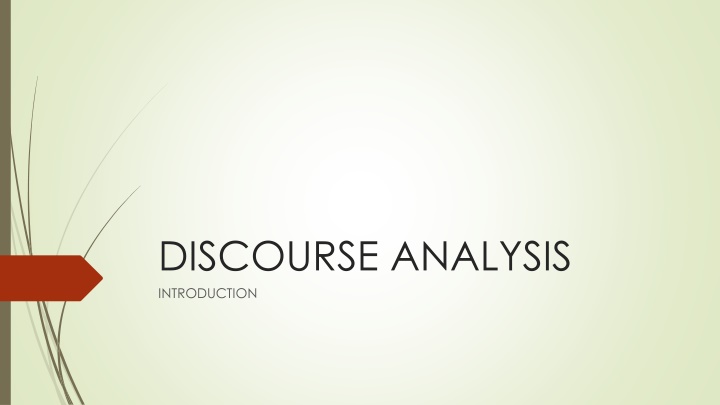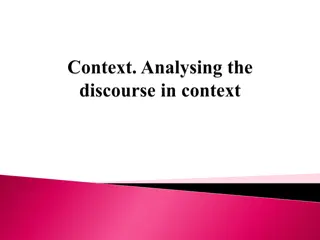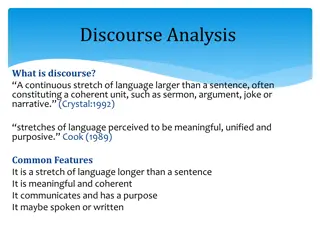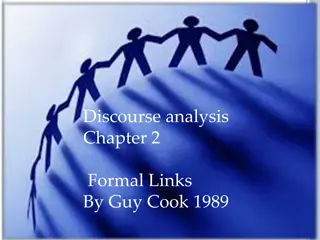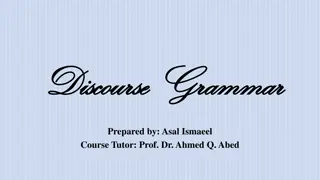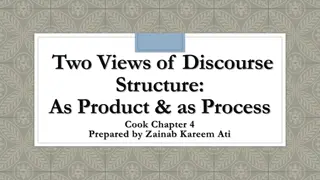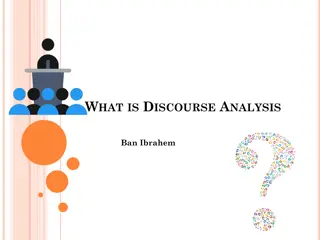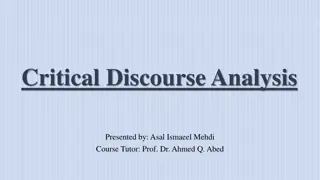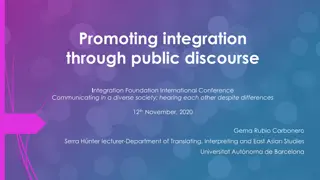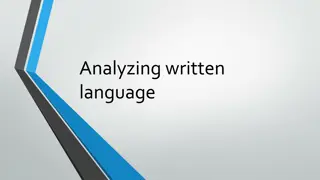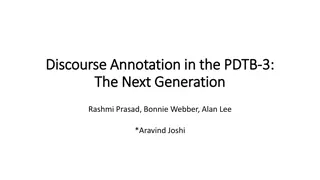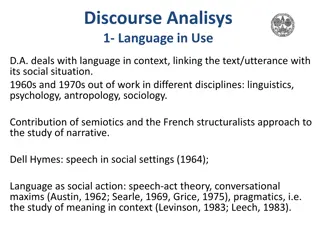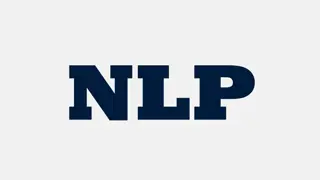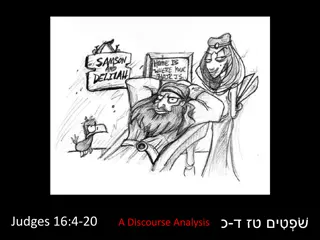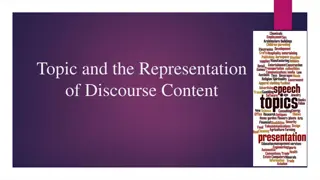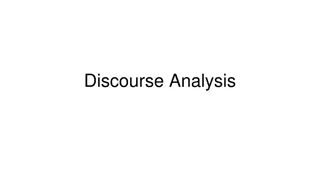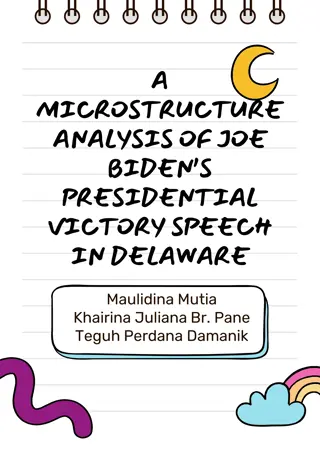Insights into Discourse Analysis
In the study of language, discourse analysis focuses on how language is used rather than its components. It delves into interpreting language nuances, understanding contextual meaning, and making sense of varied textual forms. Explore the intricacies of discourse analysis through examples and observations.
Uploaded on Mar 02, 2025 | 1 Views
Download Presentation

Please find below an Image/Link to download the presentation.
The content on the website is provided AS IS for your information and personal use only. It may not be sold, licensed, or shared on other websites without obtaining consent from the author.If you encounter any issues during the download, it is possible that the publisher has removed the file from their server.
You are allowed to download the files provided on this website for personal or commercial use, subject to the condition that they are used lawfully. All files are the property of their respective owners.
The content on the website is provided AS IS for your information and personal use only. It may not be sold, licensed, or shared on other websites without obtaining consent from the author.
E N D
Presentation Transcript
DISCOURSE ANALYSIS INTRODUCTION
In the study of language, some of the most interesting observations are made, not in terms of the components of language, but in terms of the way language is used, even how pauses are used, as in Jerry Seinfeld s commentary. We have already considered some of the features of language in use when we discussed pragmatics in the preceding chapter.
We were, in effect, asking how it is that language-users successfully interpret what other language-users intend to convey. When we carry this investigation further and ask how we make sense of what we read, how we can recognize well-constructed texts as opposed to those that are jumbled or incoherent, how we understand speakers who communicate more than they say, and how we successfully take part in that complex activity called conversation, we are undertaking what is known as discourse analysis.
Interpreting Discourse When we concentrate on the description of a particular language, we are normally concerned with the accurate representation of the forms and structures used in that language. However, as language-users, we are capable of more than simply recognizing correct versus incorrect forms and structures. We can cope with fragments in newspaper headlines such as Trains collide, two die, and know thatwhat happened in the first partwas the cause ofwhat happened in the second
part.We can also make sense of notices like No shoes, no service, on shop windows in summer, understanding that a conditional relation exists between the two parts ( If you are wearing no shoes, you will receive no service ). We can even cope with texts, written in English, which appear to break a lot of the rules of the English language. The following example, provided by Eric Nelson, is from an essay by a student learning English and contains all kinds of errors, yet it can be understood
My Town My natal was in a small town, very close to Riyadh capital of Saudi Arabia. The distant between my town and Riyadh 7 miles exactly. The name of this Almasani that means in English Factories. It takes this name from the peopl s carrer. In my childhood I remmeber the people live. It was very simple. Most the people was farmer
COHESION We know, for example, that texts must have a certain structure that depends on factors quite different from those required in the structure of a single sentence. Some of those factors are described in terms of cohesion, or the ties and connections that exist within texts. A number of those types of cohesive ties can be identified in the following paragraph.
My father once bought a Lincoln convertible. He did it by saving every penny he could. That car would be worth a fortune nowadays. However, he sold it to help pay for my college education. Sometimes I think I d rather have the convertible.
Analysis of these cohesive ties within a text gives us some insight into how writers structure what they want to say and they may be crucial factors in our judgments on whether something is well written or not. It has also been noted that the conventions of cohesive structure differ from one language to the next and may be one of the sources of difficulty encountered in translating texts.
However, by itself, cohesion would not be sufficient to enable us to make sense of what we read. It is quite easy to create a highly cohesive text that has a lot of connections between the sentences, but is very difficult to interpret. Note that the following text has connections such as Lincoln the car, red that color, her she, letters a letter, and so on.
